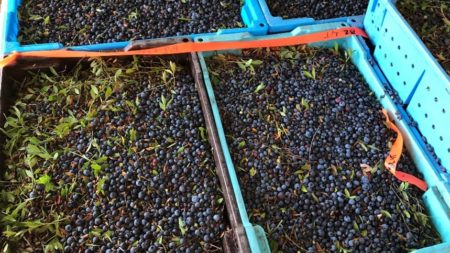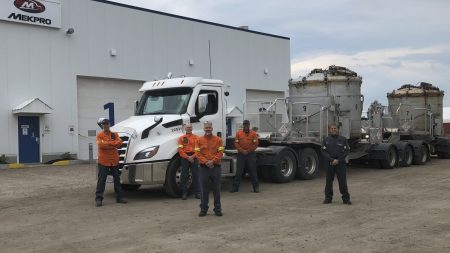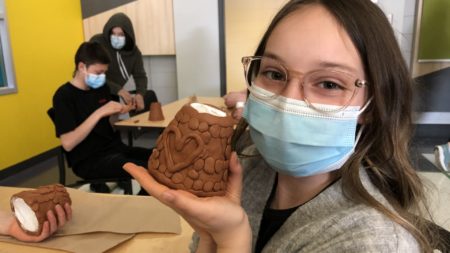Blueberries Love Aluminium Almost as Much as We Do

This article originally appeared on riotinto.com
More leaves, longer roots, more fruit – who can blame them?
Blueberries taste like summer. And they are packed full of antioxidants and vitamins. But even superfoods like blueberries need a little extra help to bring out their best.
And so in the Saguenay–Lac-Saint-Jean region of Quebec, Canada, we work with blueberry growers to make happier blueberries. Our anhydrite is a safe and effective fertiliser. The best part? It is made from waste created by our aluminium operations.
~85% of waste material (excluding bauxite residue) created by our Saguenay–Lac-Saint-Jean Aluminium operations is used to make new products
Anhydrite is a mineral normally found in rocks – but we produce around 85,000 tonnes a year in Quebec, as a by-product of our aluminium production process.
Research shows this trusty mineral helps blueberry plants grow more leaves, longer roots and—most importantly— more fruit. Because it’s local, it is cheaper than many other fertilisers too. That is good news for local blueberry growers, who can at times face high costs and lower selling prices. And it is great news for us blueberry lovers (muffin, anyone?).
Our anhydrite products are not just loved by blueberries: in 2019, we won an award from Québec circulaire—a local government-led initiative to boost the circular economy—for our reuse of anhydrite in agricultural and construction industries. And it has the Canadian Food Inspection Agency’s seal of approval too.
“Anhydrite contains calcium and sulphur –important nutrients for crops,” says Stéphane, a scientist in our Aluminium team. “It also helps improve soil texture and has no impact on pH levels, which all creates the right conditions for growing certain crops – like potatoes, wheat, barley—and now blueberries too.”
Stéphane is part of the nine-strong team of scientists, marketing and procurement experts who find ways to turn our waste into useful products, helping us reduce waste and create value at the same time. In fact, around 85% of the 400,000 tonnes of waste (excluding bauxite residue) created by our Saguenay–Lac-Saint-Jean aluminium operations is used to make new products.
But we did not stop there: Stéphane’s team has created other uses for anhydrite too. In construction, it is being used as an alternative to gypsum, a non-renewable natural resource, for cement and niche flooring materials. And in the paper industry, we recently partnered with Quebec’s Resolute Forest Products to explore the use of anhydrite in combination with sludge (organic material) from their paper mills, which, when combined could become an even more efficient ‘super fertiliser’.
We are continuing to look for ways to improve the way anhydrite is used in agriculture too. We are funding research by Université Laval and Université du Québec à Chicoutimi, in partnership with the governments of Canada and Quebec, to provide even better data to farmers about anhydrite, helping them figure out exactly how much they need—based on their crop and soil specifications—to grow more blueberries.
We can’t wait to see what they come up with next. In the meantime, pass the smoothie.
Créer une chaîne de valeur durable
La gestion des déchets est l’un des critères pris en compte dans la certification de l’Aluminium Stewardship Initiative (ASI).


